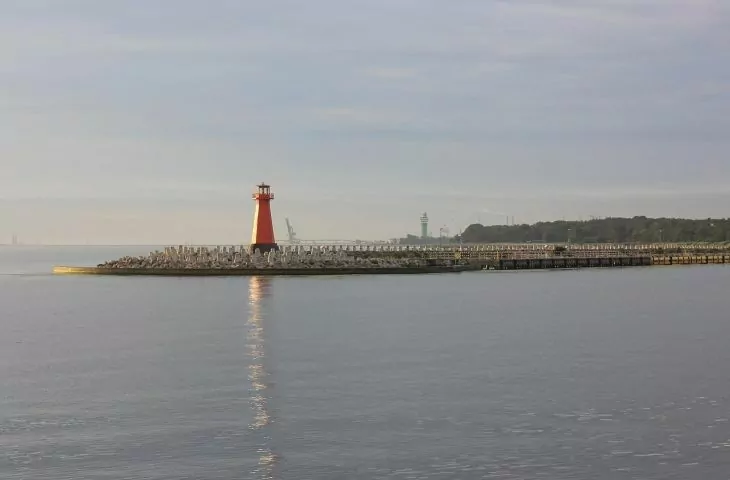On the Westerplatte peninsula in Gdansk, a two-story tourist service point building with apartments on the first floor* and adjacent paid parking for a minimum of 180 cars and 20 coaches will be built. The entire facility, which will serve tourists and visitors to the new Westerplatte and War 1939 Museum, will be selected through a tender process.
Westerplatte and War 1939 Museum
It would be hard to find a more iconic place for Poland in the history of World War II than Westerplatte - the peninsula, which is about two kilometers long, is a symbol of the outbreak of war, and the sites associated with the battle are listed as Monuments of History. There will also be a branch of the World War II Museum - the Museum of Westerplatte and the 1939 War, for the purpose of which several objects that were part of the Military Transit Depot before the war will be reconstructed, an open-air museum will be created, a new museum facility (planned in the last stage of the investment) and a military cemetery for Polish Army Soldiers, the design of which was selected in an architectural competition (1.prize was won by the proposal of the NM architects studio).
© Museum of World War II in Gdansk
tender instead of competition
Once again, unfortunately, it turns out that not every object or space "deserves" an architectural competition. Neither the tourist service point building nor the adjacent parking lot were that lucky. In this case, as stipulated in the contract announcement, price and quality will determine the choice of solution.
The scope of the study included the area on Maj. Henryka Sucharski Street on the Westerplatte peninsula in Gdansk. The new parking lot will partially occupy the area of the existing "beach" parking lot, which can be accessed via exits from Capt. W. Poinca and Majr H. Sucharski Streets, and together with the tourist service point building located next to it, is to constitute a functionally coherent whole, which will support tourist service for visitors to the CVM1939 and publicly accessible areas of the peninsula.
The two-story tourist service point building with a planned usable area of 1,655 m² is to house a lobby, ticket offices, a museum store, kitchen facilities and an unloading area on the first floor, as well as multifunctional and restaurant rooms, offices, a terrace and five suites (including one officer's suite with access to the terrace)*.
The body of the building is to have a simple form, the architecture should be in line with the spirit of the times. Material solutions on the facade referring to those used at the headquarters of the World War II Museum are to be welcomed, the order description reads.
What will the area look like after the parking lot is rebuilt and a new building erected? The results of the tender will be announced this Friday, July 16.
controversial investment
The land on which a branch of Gdansk's World War II Museum will be built was taken over from the city by the state treasury under a 2019 speculative law. Also controversial in connection with the investment is the felling of more than two hundred trees, although, as Waldemar Szulc, Deputy Director of the IIWM for Organizational Affairs, explains in a statement, sixteen of them were cut down in connection with the ongoing work:
A total of 225 trees were removed as part of the activities carried out, of which 209 dry trees, which threatened the safety of visitors, were removed due to their poor technical and sanitary condition. [...] 50 of the 251 items included in the felling were self-sown elderberries, which are multi-trunk shrubs. Cleanup work was also carried out on behalf of the Museum, which included the removal of overgrown grasses, weeds, young volunteer bushes and shrubs that prevented the necessary sapper work and geophysical surveys. As a result of the successive stages of sapper work carried out on behalf of the Museum, a total of several thousand dangerous and explosive objects of military origin were found [...], posing a real danger to visitors. In addition, in the area of archaeological research conducted by the Museum, at the site of the future military cemetery of the Soldiers of the Polish Army at Westerplatte, maintenance cuts were made and 16 trees interfering with the relics of historic buildings and located in the search area for the remains of the Defenders of Westerplatte were removed.
In the fourth quarter of 2021, the World War II Museum plans to announce an architectural competition for the second and third phases of the work. The project is expected to be completed in 2026, with a total estimated cost of more than PLN 200 million.
compiled by: Ola Kloc
* On July 9 this year, the content of the detailed description of the subject of the contract was updated, according to which the building will not have space for apartments, but multi-purpose and restaurant rooms, open space offices, a terrace and an education room.














